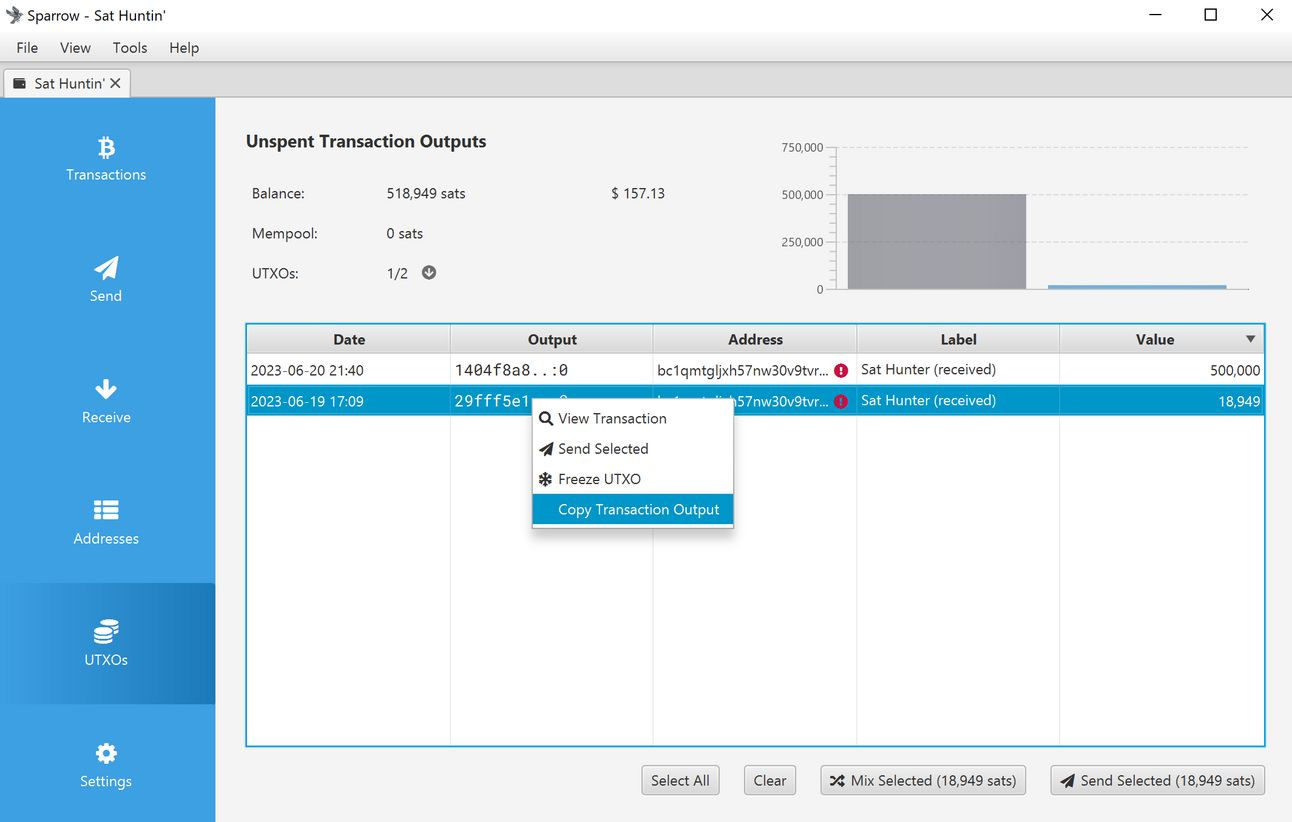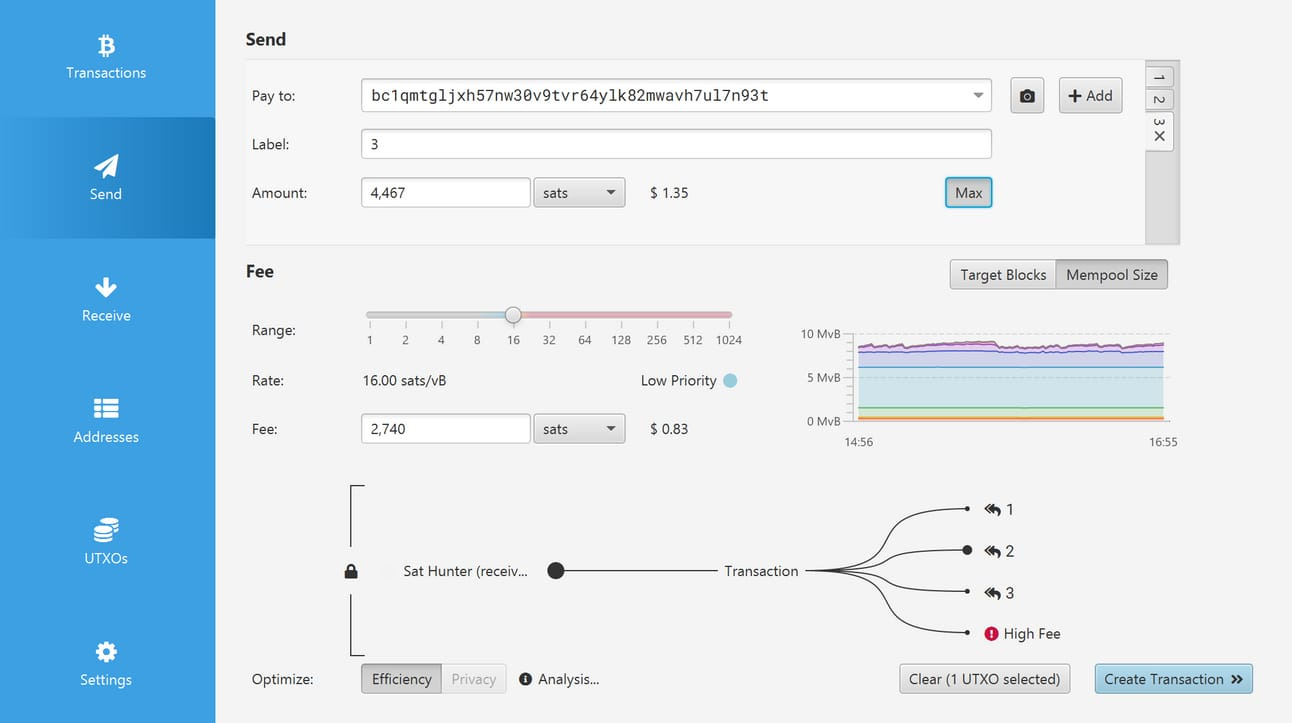Rare Sat Hunting: Panning for digital gold
Have some $BTC sitting in your wallet? You might be richer than you think 👀
“So what about you? What do you do?” she asked as her cheeks glinted over the candlelight.
“Oh”, I said as I put on my traveller hat. “I’m a mfin’ sat hunter. You better ask somebody.”
Sat hunting. What is it, and why is it so lucrative? If you’ve got some $BTC sitting in your wallet somewhere, you might have some rare sats (aka satoshis) in your pocket. So what’s a sat? If you break down 1 $BTC, it’s divisible into 100 million sats. It’s like cents for the dollar.
“Cool. So what’s a rare sat, and why should I care?”
History: Why Ordinals over everything

Ordinals can be tokens or jpegs
The Ordinal protocol took an entire community of Bitcoin purists to come out w/ pitchforks. So what’s all this wizardry about? Let’s break it down real quick.
Ordinals. Think of Ordinal Theory as a new way for us to be able to number and track sats sequentially. The implications for collectors are massive, because all of a sudden, we can start collecting specific individual sats w/ variant values.
It’s easier to compare sat hunting to coin collecting, or even philately (stamps), both of which I was seriously into. (I once got a job in a mailroom at the NHS in England so I could collect more stamps.)
Why is rare sat hunting lucrative? When you’ve got one group of buyers and another group of sellers, you’ve got a market. And even within a highly niche market, that minute segment can actually prove to be incredibly lucrative. And rare sats aren’t niche; we’re just early.
Imagine you’ve been coming home and dumping spare change into jars and bowls and cups and what not. Then one day, Alice comes over and spots a rare penny on top of your bowl. She’s convinced it’s worth a cool $500. A penny that’s worth $500? What gives?
“Well, Lincoln used this specific penny to purchase the ticket to the show where he was assassinated.” Yeah right. How tf can you trace a penny’s origin that way?
Well, with sats, you can.
Btw, the historical value as well as the rarity factor are only the base layer of where our game begins. Now let’s say Alice has found an entire bag of these rare coins, and you take them outside. You run into a famous artist. The artist takes a black marker and starts doodling on your coins.
What’s the value of each coin now? (Dali actually drew on the back of his checks so that restaurants would never cash them, since his doodles are way more valuable than the monetary value of these checks once cashed.)

One of Dali’s famous restaurant checks
This, for me, is where the real fun of ordinals versus dumb-contract NFTs begins: It’s that extra layer to perceived value that introduces an even more complex layer of gamification for collectors.
And it’s all happening on Bitcoin. We’re coming back full circle to the Godchain, bb!
Rare, Uncommon, etc.: The Breakdown
Because Casey Rodarmor proposed the Ordinals numbering system, we now use what’s called the Rodarmor Rarity Index to assess the rarity of satoshis. The image below offers a quick breakdown.

Source: ord.io
The infographic is pretty self-explanatory, so let’s dive a bit deeper.
Early blocks. Sats from Block 9 are the earliest sats in circulation. The earlier blocks have not moved, so unless Satoshi makes a comeback, these are the earliest.
Sats from Block 9 are from when Satoshi sent Hal Finney 10 $BTC, meaning these sats are from the first non-Satoshi transaction (tx).
Blocks related to historical events. An obvious example is Pizza Sats, from the 2 Papa John’s pizza purchases w/ 10,000 $BTC back in the early days. We can think up various examples and get creative here.
(What about the sats that Mt. Gox might release 1 day? What will they be worth? What about Silk Road sats? Sats used by Ross Ulbricht? You get the idea.)
Sats with a personal numeric significance. Maybe it’s your birthday sat or wedding day anniversary, and you want to get a sat for your SO. (Sick gift idea btw.) Maybe it’s your favorite string of numbers, or an old phone number.
Rare blocks. We already covered Block 9. Block 78 is the first block to be mined by someone other than Satoshi, and that’s Hal. Block 69 is a special numbered block, for obvious reasons. Block 420. Block 69420. What else?
Sat names. Like the domain name craze from the heydays of the Internet, sat names are going wild rn. Careful tho: You can mint multiple sats w/ the same name, but only the first is valid, so make sure to check the Unisat Marketplace for availability first before inscribing any sat names.
A quick note on rarity: The rarity of some sat types is actually skewed. For instance, pizza sats are historical, but they comprise 10,000 $BTC, which adds up to a lot of sats.
Block 9 sats are historical too, but not as scarce as people make them out to be. Some of them are (e.g., “First Transaction”), but like we covered earlier, not all sats are the same, so hopefully we get some clarity around circulating figures soon.
Btw check out these uncommon sats being sold by legendary sat hunter Nullish.
Hunting for rare sats: The steps
There are many ways to skin a cat. But in this case, let’s explore all the ways. Sat hunting isn’t a one-and-done approach, so let’s start with the most obvious place to look:
Your wallet.
First step: Check your wallet for rare sats
It’s real easy to check your wallet for sats. Here’s how.
Input your $BTC wallet address.
That’s it 😂
Hunting for rare-sat ordinals:
This approach only works if you can identify the project in question. Some of them have labels, as shown below.

To begin, visit http://ord.io.
Find a rare sat you like, and click through.
Copy the Inscription Number.
Visit ME on BTC, and look for the project.
Paste the id into the project search.
Voilà! You have your sat.
Something else I like to do: I find a rare sat that piques my interest, and I browse through the owner’s wallet. That way, I might be able to find some lesser-known projects I’m not privy to.
Buying from miners and selling (arbitrage):
This site lists rare sats being sold off by miners: https://www.f2pool.com/user/auction/item-list
A while back, I had a convo w/ someone who said that if you're buying rare sats as an investment, it may not be the greatest idea, since uncommons could get diluted if people keep farming them as hard as they are rn. It’s an interesting thesis, but I don’t think it’ll play out.
Rare sats will win hard, and they’ll win big. It’s an extra layer of gamification that we just don’t have w/ dumb contracts. Digital artifacts are so much more fun for collectors, and the perceived value and appeal is readily apparent.
Hunting for rare sats via exchanges (The Nullish way):
I first found out about rare sats after reading Zk and Nullish’s piece (linked below). The outlined approach goes like this:
1) Send your $BTC to an exchange (e.g., Kucoin).
2) Withdraw your $BTC to Sparrow Wallet. (Sparrow Wallet lets you extract sat ranges.)
3) Copy the UTXO.
4) Paste in http://ordinals.com to see if you got anything. Rinse and repeat!
Link to Zk and Nullish’s piece is below. It’s a solid read.
Ordinals, Inscriptions, and Rare Sats - Oh my!
zk X NULLISH x Tony Tafuro - Scroll all the way down to skip to the alpha
zkshark.substack.com/p/ordinals-inscriptions-and-rare-sats

So what are the risks? (Shoutout to @billyrestey for this.)
You’re giving up custody to an exchange, albeit temporarily. If you send $BTC to Binance, and Binance halts $BTC withdrawals, game over.
Withdrawing and depositing multiple times within a short period can get your account locked. Getting your account locked with your $BTC inside can be gut-wrenching.
Multiple tx’s adds up quick. Do this multiple times, and fees will quickly climb to hundreds of dollarinos.
Another major caveat: Now that everyone knows about this approach, it’s getting much harder to accumulate rare sats this way. Apparently exchanges are finding out too.

You’ve found special sats. Extraction in 10 steps.
This is tricky ngl. The tech for extracting rare sats is still janky af. For this step, it’s easiest to use Sparrow wallet, so make sure you’ve got this set up. You can use another wallet like Hiro, but there are extra steps involved, and I’m a proponent of simplicity, so Sparrow it is.
Click on “UTXOs” on the left-hand sidebar, and right-click on the tx you want to check under “Output”. Then “Copy Transaction Output”.

Visit ordinals.com and paste the Transaction Output and search to view the sat ranges.
Note: The “value” at the top is the cumulative value of all the listed sat ranges. If you click through each one individually, you can check their specific value.
For our example, let’s say we’re targeting the sat: 684631737843796. Therefore, it’s within the third sat range shown below.

This is what we have to figure out: How many sats are in the previous ranges before the target sat?
We can do so by subtracting the end of the ranges from the start ranges until we reach the target. Once we reach the target range, subtract the target sat from the starting sat.

There are 1742 sats up to our rare sat (i.e., 600 + 600 + 542). We want to remove 1742 sats, leaving Sat 684631737843796 at the start of a new range.
Note: Sats are indexed from 0.
Sparrow lets you freeze a UTXO at any point, guaranteeing the safety of your sats. Now select the UTXO containing the rare sat, and click "Send Selected..." on the bottom-right corner.
This is where your Math Scientist degree comes in handy.
We’re sending 3 tx’s.
Tx i) Send 1742 sats back to an exchange or a personal wallet.
Tx ii) Send the rare sat + 9999 sats thereafter to a fresh wallet you’ve set up for your rare sats.
Tx iii) Send the remaining sats back to an exchange or to a personal wallet.

Label your outputs with numbers. This makes sorting easier after creating the tx, because, for some reason, they’re randomized! 😂
Click "Create Transaction" until it matches the correct order (i.e., 1, 2, 3). To wit:
Tx i) 1742 sats
Tx ii) the rare sat, followed by 9999 sats
Tx iii) The remainder
That’s it!
Important Notes:
Do NOT use Excel to calculate ranges.
Should you find a rare sat in the first 330 sat range, you need to add a second input.
I fudged extraction the first time, so I had to go w/ another number 😂
Shoutout to @itsfranken for the free education on Sparrow wallet extraction.
Final Thoughts on rare sats
I hate saying it, but when it comes to rare sats and ordinals, we are early. We’re at the forefront of something magical, and as explorers, we’re building, engaging, and FAFO’ing. Bet that the sat extraction portion of this guide will be outdated within a matter of weeks, thanks to projects like Rare Sats Society, which is working on tooling to make rare sat extraction easy. (Check out sating.io.)
I’m sure I missed a lot of critical information in this piece. The space is changing way too fast to keep up w/ everything in a single guide, especially this early on. But some sources will remain critical and evergreen. So if you really want to dig deep into rare sats, I strongly encourage you to read the source material by Casey. It’s highly accessible.
Promise 🧡

